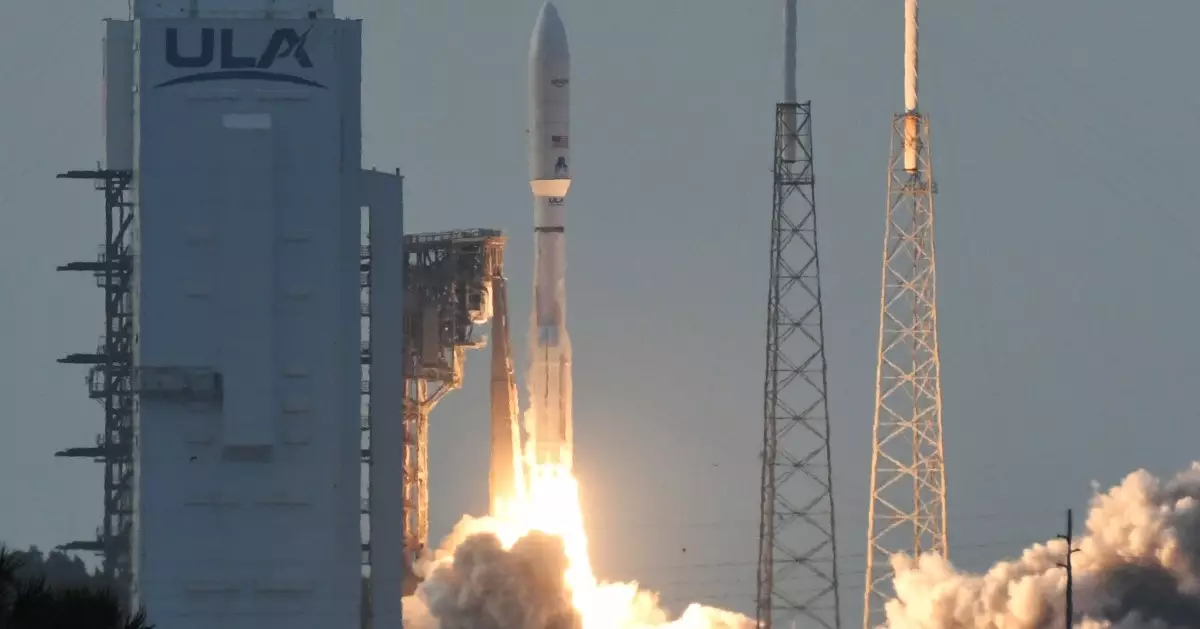The landscape of internet access is poised for a radical transformation with the launch of Amazon’s Project Kuiper. The recent deployment of 27 satellites marks a pivotal moment not just for Amazon, but for the entire realm of satellite-based internet services. As more than 3,000 satellites are planned for this ambitious project, it conveys a bold vision to provide high-speed internet access to underserved regions across the globe. This initiative stands at the forefront of technological innovation, raising questions about both its potential and its implications in an already crowded low-Earth orbit.
The Quest for Market Leadership
As Amazon endeavors to carve out its share of the satellite internet market, it faces daunting competition from SpaceX’s Starlink, which has already established a commanding presence. This competitive dynamic fuels an ongoing race in the cosmos, reshaping the way we think about internet access. With recent reports noting that Starlink has surpassed 250 dedicated launches, comprising over 7,200 operational satellites, it’s clear that Amazon has a formidable task ahead. Yet, despite the significant lead held by SpaceX, the tech giant’s backing — both financially and logistically — elevates Amazon as a credible contender in this rapidly evolving industry.
The clock is ticking for Amazon, as the Federal Communications Commission (FCC) has mandated that a significant portion of Project Kuiper’s satellites—specifically 1,618—be launched by mid-2026. This urgency underscores the high stakes involved, reflecting the critical demand for improved internet access in remote areas. This ambitious target, while daunting, also serves as a rallying point for the teams behind the project, galvanizing efforts to refine technology and streamline launch operations.
Innovation at Scale
The successful deployment of the initial batch of Kuiper satellites unveils not just the culmination of significant engineering brilliance but also a bold commitment to reshaping telecommunications. Amazon CEO Andy Jassy’s statement regarding the “incredible amount of invention and hard work” speaks volumes to the collaborative spirit that marks this endeavor. The project is not merely a technical challenge but also a societal mission to bridge the digital divide. The promise of high-speed, low-latency internet service can pave the way for educational opportunities, economic development, and improved communication in underrepresented communities.
However, we must weigh these benefits against the potential environmental impacts. The increasing number of satellites in low-Earth orbit raises valid concerns about space debris and the sustainability of our orbital environment. The specter of increased congestion looms large as various corporate entities, including French company Eutelsat and China’s Spacesail, also vie to stake their claims in the satellite internet arena. More satellites can lead to more collisions, which in turn could increase dangerous debris — a critical issue that must be addressed as we launch more systems into space.
Confronting the Future
As Project Kuiper launches forward, it becomes essential to maintain perspectives on the implications of mass satellite deployments. High-speed internet is a worthy goal, but its execution may not be free from complications. The infighting of corporate interests, regulatory challenges, and the threat of over-cluttered space must be walked hand in hand with the pursuit of this technological marvel. Governments and global organizations must establish comprehensive frameworks to govern space activities as growth in this sector accelerates.
Ultimately, Project Kuiper not only energizes a competitive technology landscape but also invites a paradigm shift in how we conceptualize internet access and connectivity. As technological boundaries are pushed and new frontiers are explored, one has to wonder: how will we not only connect the world but do so sustainably? The road ahead is fraught with challenges, but it’s also filled with unprecedented opportunities for global synergy and technological advancement. What remains to be seen is how effectively and ethically we can navigate this new chapter of connectivity.

